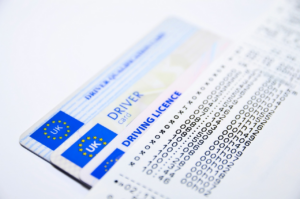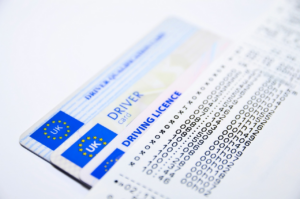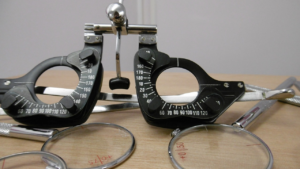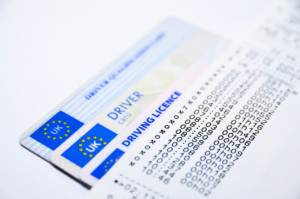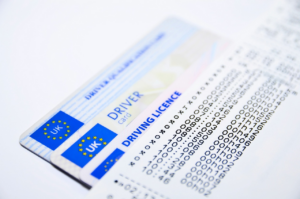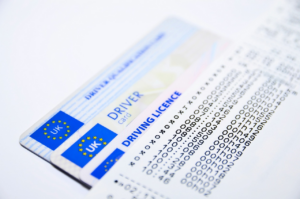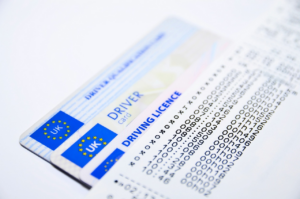Are you nervous when you have to drive in a thunderstorm? Do you find yourself gripping the steering wheel tighter and driving slower than usual? Thunderstorms can be intense and unpredictable, making driving in them a challenge. But with the right tips and tricks, you can stay safe on the road and avoid any accidents.
In this article, we will provide you with nine essential tips and tricks for driving safely in thunderstorms. From preparing your vehicle to being patient and alert on the road, we have everything you need to know to stay safe during a storm.
Whether you’re a seasoned driver or a new one, these tips will help you navigate through any thunderstorm with confidence and ease. So buckle up and get ready to learn how to drive safely in even the most intense thunderstorms.
Prepare Your Vehicle Before Hitting the Road
Before you hit the road, make sure to prepare your vehicle so you’re ready for whatever the weather brings.
The first step to preparing your vehicle is to check your windshield wipers. Make sure they’re in good condition and replace them if they’re not. You don’t want to be caught in a thunderstorm with ineffective wipers.
Also, make sure your headlights and taillights are working properly. Visibility is reduced during a thunderstorm, so it’s important to have functioning lights to see and be seen by other drivers.
Another important aspect of preparing your vehicle for a thunderstorm is checking your tires. Make sure they’re properly inflated and have enough tread. Hydroplaning is a common occurrence during thunderstorms, and having good tires will help prevent it.
Additionally, check your brakes and make sure they’re in good condition. In case of a sudden stop, you want to make sure your brakes will work properly.
Preparing your vehicle before hitting the road during a thunderstorm is essential for your safety and the safety of other drivers.
Check the Weather Forecast Before You Leave
Make sure you know what kind of weather you’re dealing with before hitting the road, so you can be better prepared for what’s ahead. Checking the weather forecast can give you an idea of what to expect, such as heavy rain, lightning, or strong winds. It’s important to remember that thunderstorms can develop quickly and unexpectedly, so even if the forecast looks clear, keep an eye on the sky and be prepared for sudden changes.
To ensure your safety while driving in a thunderstorm, here are some important things to keep in mind:
- Listen to the weather forecast before leaving and throughout your trip to stay aware of any changes in the weather conditions.
- If there’s a severe thunderstorm warning in your area, consider delaying your trip until the storm has passed.
- If you must drive during a thunderstorm, slow down and keep a safe distance from other vehicles.
- Avoid driving through flooded areas, as water levels can rise quickly and cause your vehicle to lose traction or even be swept away.
- Turn on your headlights and use your windshield wipers to improve visibility.
- If you hear thunder, it’s a sign that lightning is nearby. Stay inside your vehicle and avoid touching metal surfaces until the storm has passed.
Slow Down and Increase Following Distance
You need to slow down and increase your following distance during a thunderstorm to ensure your safety and prevent accidents. When it’s raining heavily, the roads become slippery, and your visibility is reduced. This means that it will take you longer to stop your vehicle, and you may not be able to see what’s ahead of you clearly.
To avoid a collision, you need to reduce your speed and leave more space between your vehicle and the one in front of you. To determine a safe following distance, use the three-second rule. Choose a fixed point on the road, like a sign or a tree, and count to three after the vehicle in front of you passes it. If you reach the same point before counting to three, you’re following too closely.
If the weather conditions are particularly bad, increase the following distance to four or five seconds. Remember that it’s better to arrive late than to never arrive at all.
Use Your Headlights and Turn Signals
Using your headlights and turn signals can help keep you and others safe on the road during a thunderstorm, so don’t forget to flick them on and signal your intentions. Here are some tips on how to effectively use your lights and signals during a storm:
-
Turn on your headlights even during the day to increase visibility. This will not only help you see the road better, but it’ll also help other drivers see you too.
-
Use your turn signals when changing lanes or making a turn. This will alert other drivers of your intentions and prevent any sudden movements that can cause accidents.
-
Avoid using high beams as they can cause glare and reduce visibility. Instead, use low beams or fog lights to illuminate the road ahead.
By using your headlights and turn signals properly, you can reduce the risk of accidents and keep yourself and others safe on the road during a thunderstorm. Remember to always be aware of your surroundings, slow down, and give yourself plenty of following distance.
Avoid Sudden Maneuvers
To prevent accidents and maintain safe driving conditions during thunderstorms, it’s important to avoid sudden maneuvers on the road. This means no sudden turns, sudden lane changes, or sudden braking.
When driving in a thunderstorm, you should always anticipate the unexpected. You never know when a sudden gust of wind or a flash flood can occur. So, it’s important to keep a safe distance from other vehicles and to maintain a steady speed, avoiding any sudden movements that could cause a collision.
If you need to make a turn or change lanes, do so gradually and with caution. Use your turn signals well in advance to alert other drivers of your intentions. Remember, sudden maneuvers can cause your vehicle to hydroplane or skid on wet roads, especially during a thunderstorm.
To maintain control of your vehicle, steer gently and smoothly, avoiding any sudden jerks or movements that could cause your vehicle to lose traction. By following these tips, you can drive safely in a thunderstorm and avoid accidents on the road.
Stay in Your Lane and Avoid Puddles
Stay in your lane and steer clear of puddles to ensure a smooth and stress-free ride during stormy weather. It may be tempting to switch lanes or swerve to avoid large puddles, but sudden maneuvers can be dangerous and increase the risk of hydroplaning. Follow these tips to stay safe while driving in thunderstorms:
- Keep a safe distance from the car in front of you to avoid splashing water and losing visibility.
- Slow down and maintain a consistent speed to prevent hydroplaning.
- If you must drive through a puddle, drive slowly and steadily to avoid losing control of the vehicle.
- Use your headlights to improve visibility and signal to other drivers that you’re on the road.
If the rain is too heavy and visibility is poor, pull over to a safe location and wait for the storm to pass.
By staying in your lane and avoiding puddles, you can reduce the risk of accidents and arrive at your destination safely. Remember to stay alert and cautious while driving in stormy weather, and always prioritize safety over speed.
Pull Over and Wait out the Storm if Necessary
If you’re caught in a thunderstorm, sometimes the best thing to do is pull over and wait it out until the storm passes. This is especially true if the rain is so heavy that you can’t see the road or if the wind is so strong that it’s difficult to control your vehicle.
When you’re driving in a thunderstorm, you need to be aware of your surroundings at all times and make sure that you’re not putting yourself or anyone else in danger. When you pull over, make sure that you’re parked in a safe location away from other vehicles and trees.
Turn off your engine and avoid touching any metal parts of your car, as lightning can strike the vehicle and electrocute you. Stay inside your car and wait until the storm passes before you resume driving.
Remember, safety should always be your top priority when driving in a thunderstorm.
Be Patient and Stay Alert
You might feel frustrated, but it’s important to be patient and keep your eyes peeled when you’re caught in a storm. Thunderstorms can cause poor visibility, slick roads, and unpredictable driving conditions. Your best bet is to slow down and maintain a safe distance from other vehicles to avoid accidents.
In addition to being patient, staying alert is key. Keep an eye on the road ahead for any hazards such as fallen trees, flooded areas, or debris. Don’t rely solely on your windshield wipers to clear your view, as heavy rain can quickly accumulate and obstruct your vision.
Remember to turn on your headlights and use your blinkers when necessary, and avoid sudden movements or lane changes. By being patient and staying alert, you can safely navigate through a thunderstorm and arrive at your destination unscathed.
Frequently Asked Questions
What should I do if I get stranded in my car during a thunderstorm?
If you find yourself stranded in your car during a thunderstorm, stay calm and take immediate action to ensure your safety.
The first step is to turn off the engine and any electronics to prevent a potential electrical surge.
You should also avoid touching any metal surfaces inside the car, such as the steering wheel, as lightning can travel through metal.
Stay inside your car until the storm passes and avoid seeking shelter under trees or other tall objects.
If you need to exit the car, do so quickly and seek shelter in a low-lying area.
Remember to always prioritize your safety during a thunderstorm.
Can I still drive in a thunderstorm with my hazard lights on?
Driving in a thunderstorm can be nerve-wracking, but it’s important to know what to do to keep yourself and other drivers safe. You may be tempted to turn on your hazard lights to increase visibility, but this is actually not recommended.
Hazard lights are meant to indicate that a vehicle is stopped or disabled, so using them while driving can confuse other drivers and increase the risk of an accident. Instead, use your headlights and windshield wipers to improve visibility and reduce your speed to a safe level.
Remember to give yourself plenty of distance from other vehicles and avoid any standing water on the road. By following these simple tips, you can safely navigate a thunderstorm and arrive at your destination without incident.
Should I avoid using cruise control in a thunderstorm?
When driving in a thunderstorm, it’s highly recommended that you avoid using cruise control. This is because cruise control relies on sensors to detect changes in the road and makes adjustments accordingly. However, in a thunderstorm, the sensors may not accurately detect the wet roads and can cause the vehicle to accelerate or decelerate unexpectedly.
It’s important to maintain full control of your vehicle at all times in these conditions, and disabling cruise control is one way to help ensure your safety and the safety of others on the road. Remember to always stay alert, reduce your speed, and increase your following distance when driving in thunderstorms.
Is it safe to drive through standing water on the road during a thunderstorm?
Driving through standing water on the road during a thunderstorm is extremely dangerous and should be avoided at all costs. Even just a few inches of water can cause your car to hydroplane, losing contact with the road and reducing your ability to steer or brake.
In addition, standing water can hide hazards such as debris, potholes, or even washed-out sections of road. If you encounter standing water while driving in a thunderstorm, the best course of action is to turn around and find an alternate route.
Remember, your safety is always the top priority.
Can I use my phone or GPS while driving in a thunderstorm?
While driving in a thunderstorm, it’s important to stay focused on the road and avoid any distractions. Even a quick glance at your screen could cause you to lose control of your vehicle in the slippery and low-visibility conditions.
Instead, plan your route and adjust your GPS before you start driving. If you must make a call or send a text, pull over to a safe location first.
Keep in mind that your safety and the safety of those around you should be your top priority while driving in a thunderstorm.
Conclusion
Now that you’ve learned these 9 tips and tricks for driving safely in thunderstorms, you’re better equipped to handle adverse weather conditions.
Remember to prepare your vehicle beforehand, check the weather forecast, and slow down and increase following distance. Use your headlights and turn signals, and avoid sudden maneuvers.
Stay in your lane and avoid puddles, pull over and wait out the storm if necessary. Be patient and stay alert.
By following these guidelines, you can reduce the risk of accidents and ensure that you reach your destination safely.
Remember, it’s always better to arrive late than not at all. So, the next time you find yourself driving in a thunderstorm, take a deep breath, stay calm, and put these tips into action.
Safe driving!












































